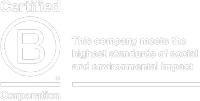Embedding purpose and bringing a brand to life internally are probably the most challenging aspects of a branding process. We’ve looked at setting a new brand up for success by taking your team on the journey and how empowering them to grow the brand are essential. Now we look at managing and measuring brand health – the strength of your brand culture and purpose – internally over time.
Taking your brand to market via all your customer touchpoints – your website and digital environment, marketing and sales collateral, campaigns and physical spaces – is almost the easy part. All this outward, tangible activity will build awareness, but if it’s only a marketing ‘mask’, it won’t create the kind of brand trust and connection that leads to growth.
I like to think of it in human terms – if you say one thing and do another, people won’t trust you. It’s that simple. Only when you do the inner work to live in alignment with your values do you build great relationships based on trust. For a company,
it’s about doing the work internally to bring everyone together in ‘imperfect’ harmony. Having brand clarity and a meaningful purpose can make this so much easier.
It’s true that what gets measured gets managed. So, you need to find ways to measure brand engagement and alignment within your organisation, and your progress towards activating purpose – the impact you want to have.
Below I’ve outlined just a few measures you can put in place to strengthen and nurture the vitality of your brand and purpose from the inside out.
Find the right people
There’s nothing more important than finding the right people for your business. When it comes to strengths, skills and perspectives, variety is key. When it comes to purpose and values however you need alignment. This is only possible if you’ve uncovered your core values, principles, and have clarity of purpose. Armed with this conviction, you know exactly who you’re looking for – and they know exactly who you are at the outset. This also goes for partners, investors, boards and suppliers.
Every employee is an ambassador for your company and brand. If an employee contradicts the values and purpose of your organisation due to incompatibility, this will eventually impact their personal performance and wellbeing, as well as the wellbeing and success of the company. Do the work upfront to attract and engage attuned people and have the awareness to let those who don’t share your values move on to something that will bring them more fulfilment.
Add core values and purpose to team KPIs
Performance is often all that’s measured in a business, but if you’re trying to transform a brand perception, or moving from a profit-led focus to embrace a purpose-driven brand, you’ll need to expand your measures of success. If you’ve done a good job of hiring aligned people and properly onboarding them to your brand culture, you can then measure values-aligned behaviour as part of your effort to embed your brand and purpose.
If one of your core values is empathy, how has this been demonstrated by the team member? Get them to provide clear examples each quarter. You will need to create a framework initially so everyone is clear on what success looks like. It’s not enough to state your values, you need to define behavioural expectations – what actions demonstrate those values? How will success be measured?
You can also recognise and reward values-centric behaviours regularly. You could give employees the opportunity to recognise co-workers for successfully living the values via monthly votes or a platform for sharing stories, give recognition in internal communications or even share their contribution publicly on your website or social media.
Audit and make changes where there’s misalignment
Look at your purpose, values and brand promise and ask yourself what changes need to be made for your company to live these with conviction? For example, a promise that centres around innovation means embracing and encouraging failure. If your purpose involves the environment and sustainability, then you may need to look closely at your supply chain and practices, among other things. If one of your core values is fairness, how are your products and services contributing to a fairer world? Or how are you empowering fairness in your culture? Some changes will be straightforward and simple – like updating your communications – but other changes will be more complex and challenging. The goal is to just keep going, bringing things into alignment one step at a time.
We’ve developed a simple tool we use called the ‘long short audit’, designed to help an organisation audit their brand practices to classify activities they need to undertake now and in the future to achieve alignment, both internally and externally. Another exercise is to develop a set of guiding questions that provide governance for new ideas and initiatives. This can help to ensure all future activities are aligned without deterring autonomy.
Let your people assess your progress
If you really want to measure your progress in embedding a rich brand culture and purpose, the best people to listen to are your employees. Create opportunities for them to provide feedback and contribute ideas for improving alignment across the organisation. Your purpose, values and brand promise must be known and connected at all levels of the business – starting with leadership and extending right out to every employee. The more successful you’ve been in embedding your purpose and a common sense of identity, the more likely it is that your people will find both the brand and their work meaningful.
There are online tools, like our Conscious Brand Assessment, that allow all employees to collectively assess the brand culture, how well the purpose is guiding the organisation, and if brand practices across the company are conscious, aligned and meaningful. Doing an assessment prior to a rebrand and then periodically post-launch will provide a tangible measure of progress.
Intangible measures are also valuable indicators of success. They include things like happier and more fulfilled employees, enthusiasm, people expressing clearly what the company stands for, people holding each other accountable to the core values and desired behaviour, enhanced collaboration, receptiveness and problem-solving.
Introduce new policies or initiatives
A brand culture can be reinforced effectively through company policy or initiatives. A company with a commitment to protecting the environment might introduce credits or rewards for employees who bicycle or take public transport to work. A company that values curiosity may create an initiative where employees spend a day a month exploring and testing new ideas. A client of ours recently introduced a scholarship program internally to support its brand purpose of empowering potential and being a partner in progress.
Bringing a brand and purpose to life internally is an act of conscious leadership that can have a transformative effect on an organisation. A lot of the time you’ll be navigating this path with a lot of ambiguity and uncertainty. You’ll need to apply new thinking and reframe the way things have always been done. Put some of these measures in place and you’ll start to build the kind of brand trust and connection that leads to growth.







